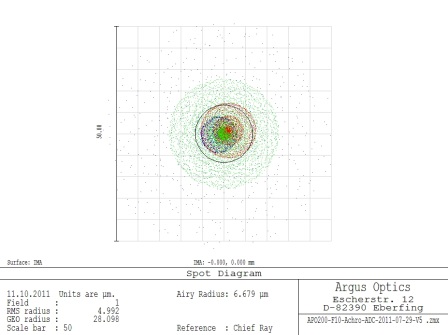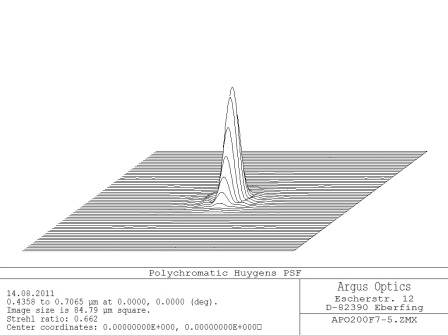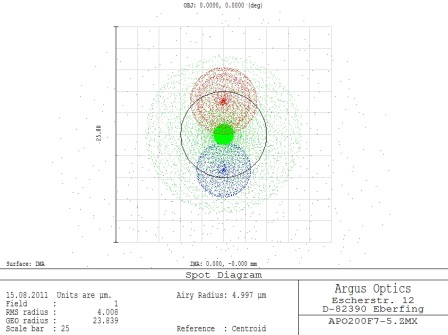CAUSE Enters light in the earth’s atmosphere the light path will be influenced by refraction. Since the refraction depends on the wavelength of the light, the influence of the atmosphere is for blue light higher compared to red light. The refraction changes the direction of the light path towards the earth ground. |
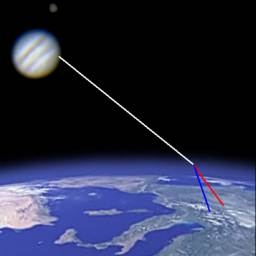 |
When the observer elongates the light direction of a star the light seems to come from a place which seems in general higher above the horizon. The displacement depends on the height above horizon and the wavelength of the light. This effect is responsible for the shifting of the observed planetary disk in the different wavelengths. The planetary disk in the blue light is shifted to higher positions and the disk in the red light is shifted to lower positions compared to the other wavelength. So the observer would see a blue rim in the upper part of the planetary disk and a red rim in the lower part. Since in a Kepler telescope the image is inverted, the observer sees the upper part of the planet with a red rim and the lower part with a blue rim. The graph on the right shows that this effect depends on the height above horizon or the distance to the zenith. Depending on the distance to the zenith the spread between blue and red starlight grows and exceed for zenith distances above 55° (35° above horizon) the diameter 1arcsec corresponding to the resolution of a 4” refractor. You can imagine that for planetary observations with a 8” telescope (resolution 0.5”) this effect has a serious impact on the image quality. |
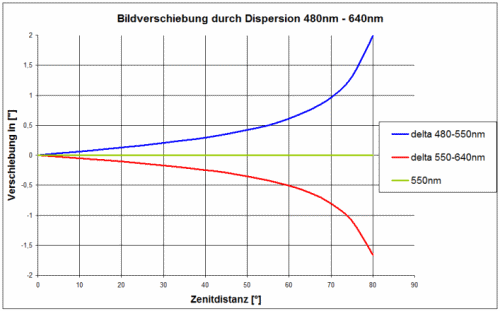 |
The Atmospheric Dispersion Corrector (ADC) The Corrector minimizes the spread between the blue and the red light of an object. |
|||||||||||||
|
| The achieved Strehl value is only minimal worse compared to the optimal condition for an object with zenith distance 0°. The Strehl value describes how many percent of the light are imaged into the airy disc compared to an ideal optic for the selected telescope system. The diameter of the airy disc is defined by the diameter of the first diffraction minimum. | |
| The ADC has two pairs of prism. Each prism pair is a plan configured as a plan parallel plate with a crown glass and a flint glass. The glasses are selected to have the identical refraction index but different dispersions. The identical refraction index guarantees that the image doesn’t move when the prim are turned round the rotation axis. When the prism pairs are turned with the same angle but in reverse directions the effect of compensation can be varied. Have the two prism the same orientation the compensation effect is maximal. Are the prism orientation exact 180° in opposition, the effect is zero. |
 |
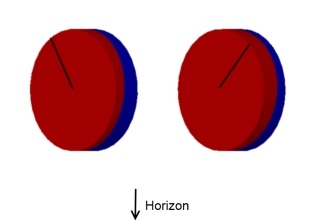 |
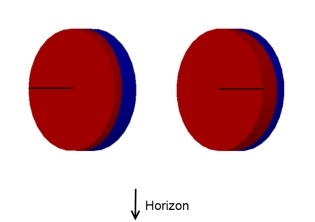 |
| maximal compensation | about 70% compensation | minimal compensation |

